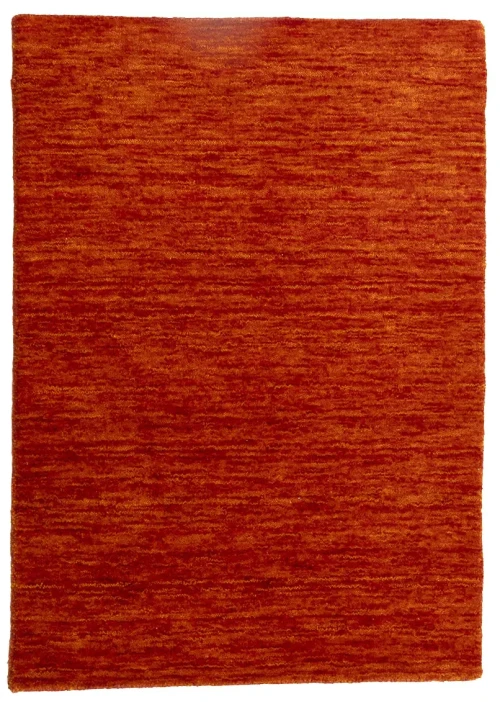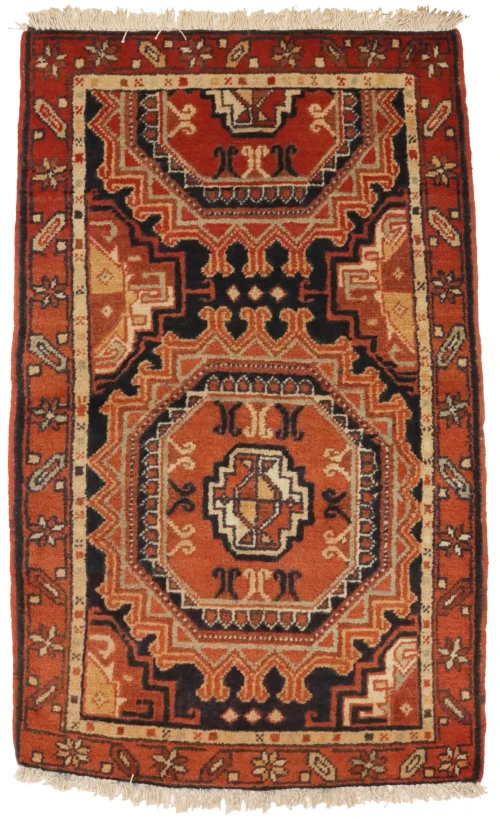Tags: holidays,Rugs,rug cleaning and care
Best Sellers

Orange Red Solid Gabbeh Modern Rug in All Size
$85.95 USD$191.00

Extra 15% off + Free PAD with code HOLIDAY15



One of the hottest trends in interior design right now is rug layering—a simple yet effective way to add warmth, texture, and visual interest to any room. Layering rugs allows you to play with patterns, textures, and sizes, giving your space a unique and personalized touch. Whether you're looking to make a bold statement or add subtle depth, mastering the art of layering rugs can transform your home into a cozy retreat.
In this blog, we’ll explore how to layer rugs like a pro, offering tips and tricks for mixing and matching different styles to create a cohesive and stylish look. Plus, we’ll recommend some beautiful options from Magic Rugs to inspire your layered rug design.
1. Start with a Neutral Base Rug
The foundation of any well-layered rug look begins with the right base rug. Choose a large, neutral-colored rug that will serve as the backdrop for your layered design. This could be a solid or lightly textured rug in shades of beige, gray, or ivory. A neutral base rug ensures that the additional layers you add on top won't overwhelm the space but instead, work together harmoniously.
Recommended Product: Beige 2X3 Zero Count Wool Braided Modern Rug

2. Play with Patterns and Textures
Once you have your neutral base, it's time to add a rug with a pattern or interesting texture. This is where you can get creative! Choose a smaller, more colorful rug that contrasts with your base rug to create visual interest. Whether it’s a bold geometric print, a traditional Persian design, or a textured shag rug, layering different patterns and textures can give your room depth and personality.
Recommended Product: Geometric Modern 5X8 Hand-Tufted Rug

The key to successfully layering patterns is balance. If your base rug has a subtle texture, feel free to go bold with the top layer. On the other hand, if your base rug has a more pronounced texture, opt for a simpler pattern on top to avoid visual overload.
3. Mix and Match Rug Sizes
The beauty of layering rugs is that you’re not confined to one size. You can mix and match rugs of different sizes to create a more dynamic look. Typically, the base rug is larger, covering most of the floor space, while the top layer is smaller and acts as an accent piece.
Recommended Product: Vanilla Cream Floral 12X15 Oushak Chobi Oriental Rug & Vintage Pictorial Classic 2'6X3 Kashan Persian Rug


For high-traffic areas, layering rugs of different sizes can also help divide the space or highlight specific areas of the room.
4. Pair Traditional and Modern Rugs for a Unique Look
One of the most exciting aspects of rug layering is the freedom to mix styles. Don’t be afraid to pair a traditional rug with a modern design for a striking contrast. For example, layer a vintage Persian rug over a minimalist, modern base rug to create a look that’s both eclectic and cohesive.
Recommended Product: Oatmeal Grass Design 6X9 Modern Oriental Rug & Teal Blue Floral 4X4 Bidjar Halvaei Persian Round Rug


By blending these different design elements, you can create a room that feels curated and one-of-a-kind.
5. Experiment with Color
Layering rugs offers the perfect opportunity to play with color. You can either go for complementary colors that create harmony in the room or use contrasting colors to make a bold statement.
For example, layer a warm-toned rug over a cool-toned base rug to create an inviting and balanced look. The warm, earthy tones of this rug make it perfect for adding a touch of warmth to any room during the cooler months.
If you're looking for a more monochromatic palette, consider layering rugs in varying shades of the same color family. This creates a cohesive look while still adding depth.
6. Keep Functionality in Mind
While layering rugs is an excellent way to elevate your space, it’s important to keep practicality in mind. Make sure the top rug is securely placed on the base rug to avoid slipping or tripping hazards. You can use rug pads or rug tape to keep everything in place, especially in high-traffic areas like the living room or hallway.
Additionally, consider the placement of your furniture. Layered rugs work best in areas where the furniture doesn’t completely cover the rugs. For instance, placing a layered rug under a coffee table or near a sofa allows both rugs to shine without being obstructed by larger furniture pieces.
7. Layering in Different Rooms
Rug layering isn’t just limited to living rooms—it can work in any room of your home. Here are a few ideas to get you started:
Bedroom: Layer a plush, cozy rug at the foot of your bed for a warm, inviting touch. You can use a large area rug under the bed and a smaller, textured rug layered on top for extra comfort.
Dining Room: If you have a dining table, try layering a patterned rug under the table with a solid-colored, larger rug beneath it. This adds texture and creates a stylish, cohesive look.
Entryway: For a statement-making entry, layer a runner with a smaller, patterned rug near the door to welcome guests in style.
Layering rugs is a versatile and trendy way to create cozy, inviting spaces that reflect your personal style. Whether you're mixing patterns, playing with textures, or experimenting with color, the possibilities are endless when it comes to layering rugs. With a few thoughtful choices and some creativity, you can transform any room in your home into a warm and welcoming space—just in time for the colder months.
Ready to start layering? Explore our full collection of beautiful rugs at Magic Rugs and find the perfect combination for your space!